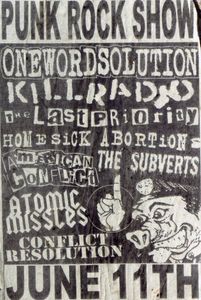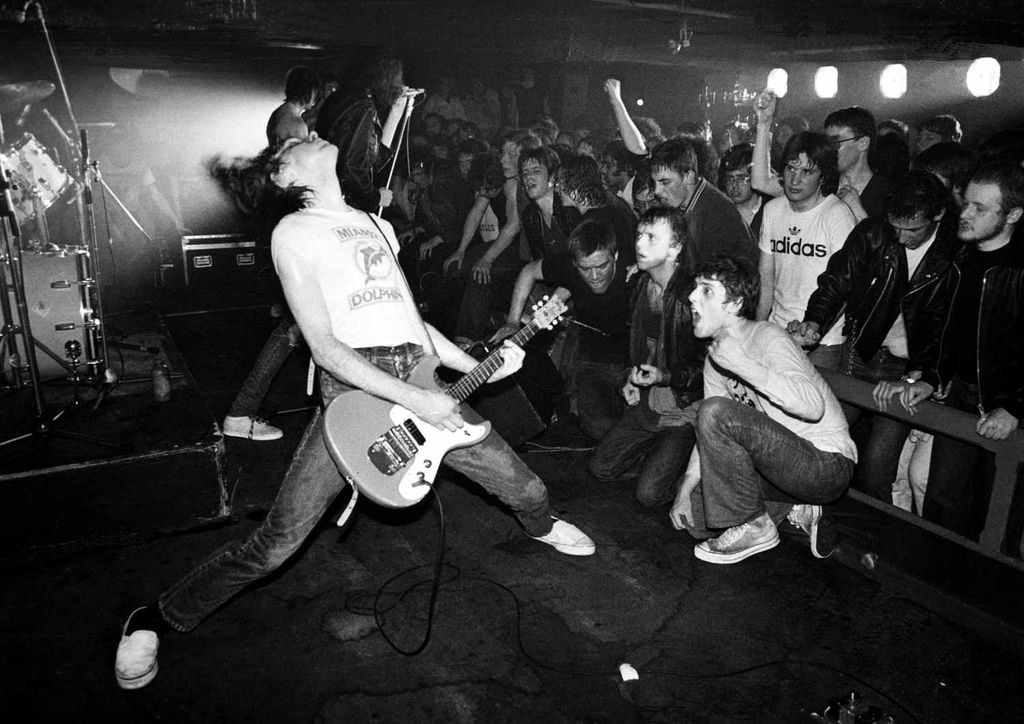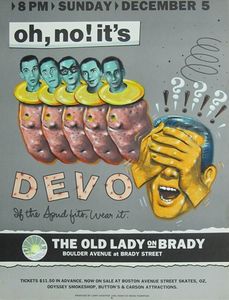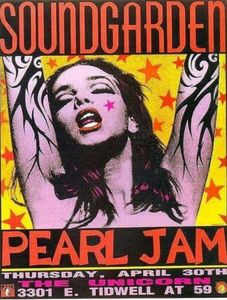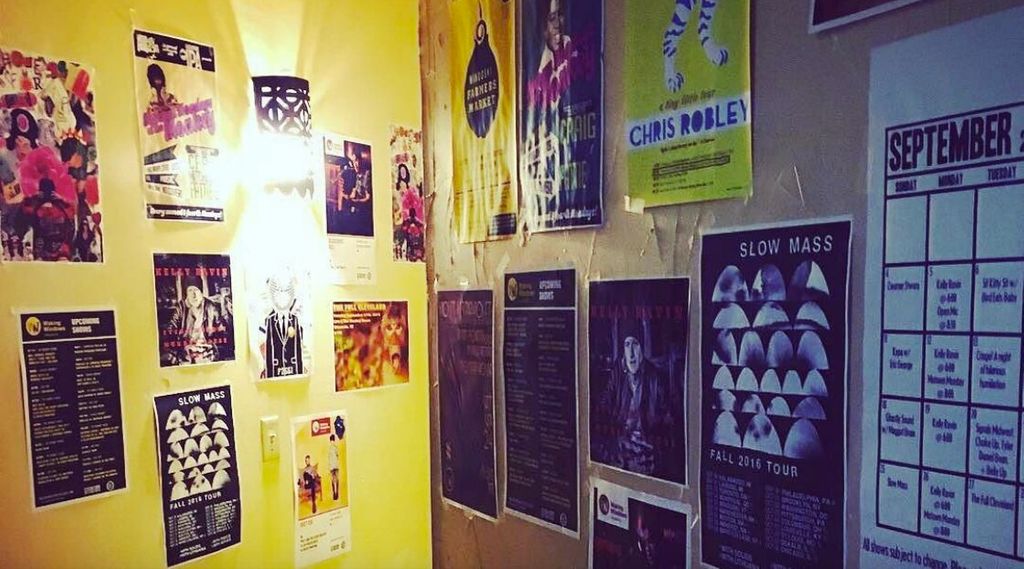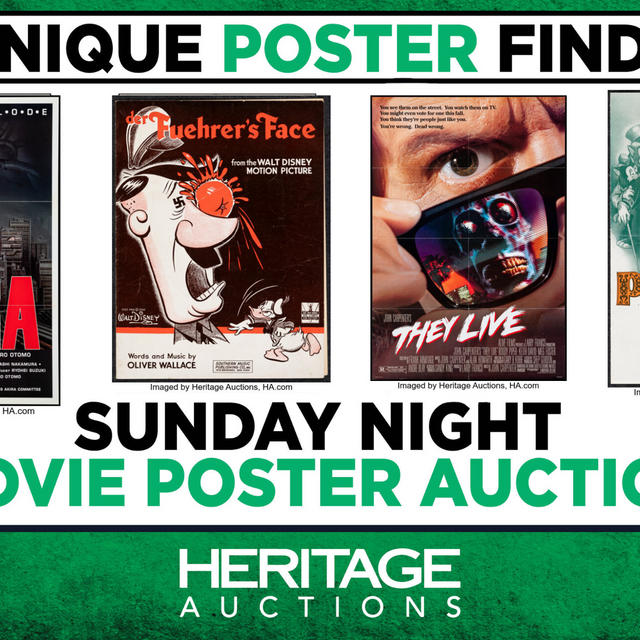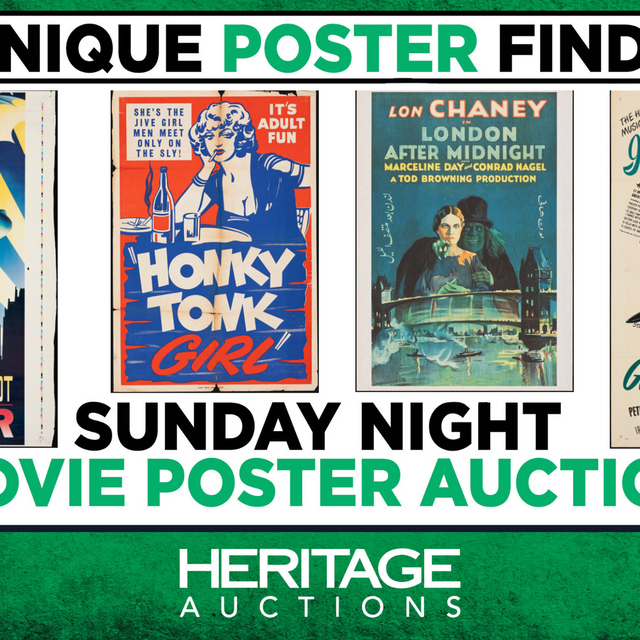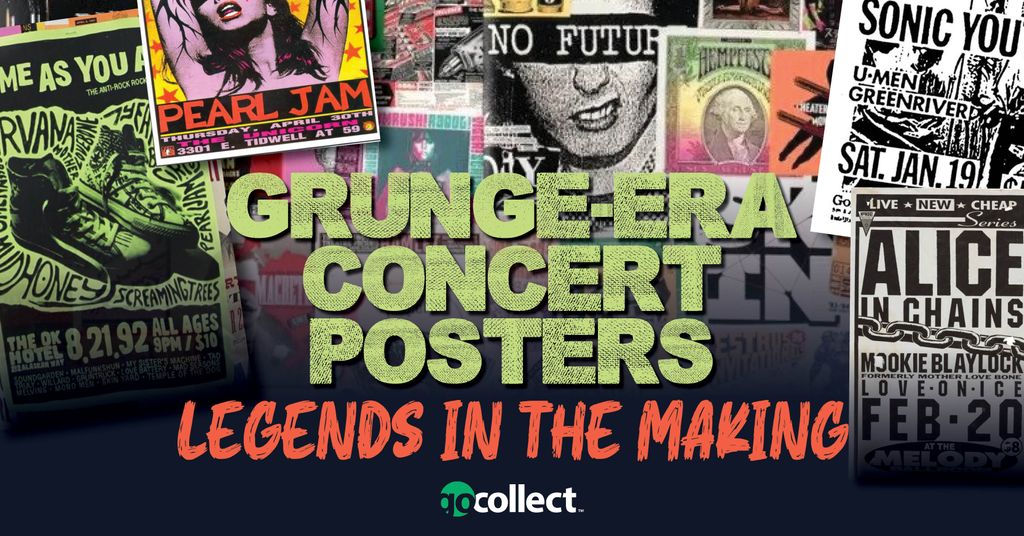 As rock bands of the 1970s outgrew clubs and began to fill stadiums and arenas, the need to raise awareness for performances would start to dwindle. As the bands of the 60s became bloated, overblown versions of their earlier selves, a new musical genre would begin to rise up as an answer to the mega-stardom and excess of the 60s. The next big movement in concert posters would be the D.I.Y. (do it yourself) flyers of the punk and new wave movements of the 70s and 80s.
As rock bands of the 1970s outgrew clubs and began to fill stadiums and arenas, the need to raise awareness for performances would start to dwindle. As the bands of the 60s became bloated, overblown versions of their earlier selves, a new musical genre would begin to rise up as an answer to the mega-stardom and excess of the 60s. The next big movement in concert posters would be the D.I.Y. (do it yourself) flyers of the punk and new wave movements of the 70s and 80s.The Punk Revolution
In the 1970s, punk rock would rise up from the gutters of New York and London as an answer to the self-indulgence of the 60s. Punk rock rebelled against groups like Led Zeppelin and Pink Floyd, whose thirty-minute guitar solos and intricate stage shows began to turn off a segment of the rock community.
These people longed for the simpler days of the stripped-down energy of the 50s, but with rougher edges and a desire to make social commentary.
Posters for the People
Much like the musical posture that punk assumed—dirty, fast, and simplistic- the next wave of concert posters was also a new breed. They’d be mainly printed on xerox machines or mimeographs and designed by amateur artists. The look and feel of punk posters was jagged and unruly, combining the font style of ransom notes, repurposed imagery or hand-drawn designs, and the smaller size of the 8” x 11” flyer.
The surviving punk adverts are also popular items that are traded by a cultishly devoted fanbase. Bands like the Ramones, Sex Pistols, and The Clash popularized a genre that has sustained itself through the decades, thanks to devotees of the punk lifestyle.
Punk would transform into hardcore during the 80s while continuing with a similar style of flyer design. These used an even more “no-frills” approach that would mirror the tougher sound of the music they promoted. Both punk and hardcore concert posters are very rare in good condition.
Fans of these collectibles are currently aging into the demographic of collectors, much like the Baby Boomers that came before them that drove the interest in psychedelic poster art. Punks are now at that age where they want to recapture the memories of their youth.
New Music Movements Emerge
Pieces from the Punk era were commonly printed on paper, not board. This made survival rates lower, and, as most collectors are aware, rarity often equates to value. While punk was making waves, another musical subculture was birthed on the streets of New York City.
The unique graffiti art of rap music was beginning to appear on handbills that were circulating in clubs and discotheques around the urban sprawl of the outer boroughs of New York. Rap promotional flyers and handbills are a very desirable niche offshoot of the concert poster world. Now that rap has basically usurped rock as the popular music of choice, the roots of the form are quickly becoming a ripe ground for memorabilia collectors.
1980s
Moving on into the 80s, new wave would once again remake the concert poster aesthetic. It employed similar tools to the punk movement, but added its own unique spin on the concert poster. New wave art was commonly recognized for its simple and colorful imagery.
While punk reveled in ugliness and offensiveness, new wave prided itself on artistic snobbery. Some bands like Devo leaned into their art school backgrounds to help define their iconography. Other bands would go for the darker look of goth or electronic music.
Grunge’s Greasy Emergence- 1990s
At the beginning of the 90s, rock music was once again overdue for a shot of adrenaline. The MTV Generation had grown bland on a diet of prepackaged saccharine pop hits, hair metal ballads, and artists from the 60s updating their sound to try and appeal to a new audience. Meanwhile, in the Pacific Northwest, something was brewing among the rain and trees. Bands that were influenced by hardcore punk and heavy metal movements of the 80s were throwing all their progenitors into a blender. The end result was an era that was termed grunge by music journalists.
Bands like Soundgarden, Pearl Jam, and of course, Nirvana, would serve to sweep the plate clean once again. They killed off the outdated hairstyles and fashions of the 80s and launched a new, melodic but heavy movement. Its penchant for flannel and ripped jeans would soon take over popular culture. The gritty roots of grunge were patterned on the ideas of punk. The concert poster art that would arise from the grunge movement would take on its own unique identity. It employed some of the shock elements of punk, as well as psychedelic design ideas from the hippie era.
Blast From the Past
The poster art of the 90s would once again turn its focus to the larger poster-sized pieces of the past, and a crop of incredible artists would rise from the scene. Names like Art Chantry, Mike King, and Jim Blanchard would pop up. Drawing influences from tattoo flash art and indy comics, the distinct style and flavor of the 90s concert poster melded perfectly with the music it promoted.
They also ignited interest in a new segment of the concert poster collecting world, the direct sale poster. These were made to be sold directly to fans, and led to many high-quality pieces being preserved in impressive condition. As the 90s rolled into the new century, the internet and home printing tech would once again change the game in the 2000s. Flyer art became easily accessible to anyone who had a computer and rudimentary artistic skills.
A New Artist Appears
In the modern age, anyone and everyone who plays music could be their own concert poster production house. With tools like Photoshop, any laptop can be transformed into a creative studio. Some with more firepower than an entire advertising company. In the era of Mad Men, concert posters are legion.
Even the most obscure act with a small base can create great art to promote their live shows, but few have mastered this new art form. This leads to an abundance of material out there. There are, however, few pieces worth noting from the vantage point of a collector.
Poster art remains a direct and low-cost way to let people know about an upcoming gig. As such, the concert poster continues to be a form of expression as well as advertisement. The direct purchase poster business is still in full bloom. These collectibles are being generated for delivery to rabid fans. The concert poster has held its ground in the digital age, in a transformed state. To be honest, everything has had to reconfigure to survive since the advent of the internet.
Who knows what the future holds for concert posters?
Tell us your thoughts! Leave a comment below!

